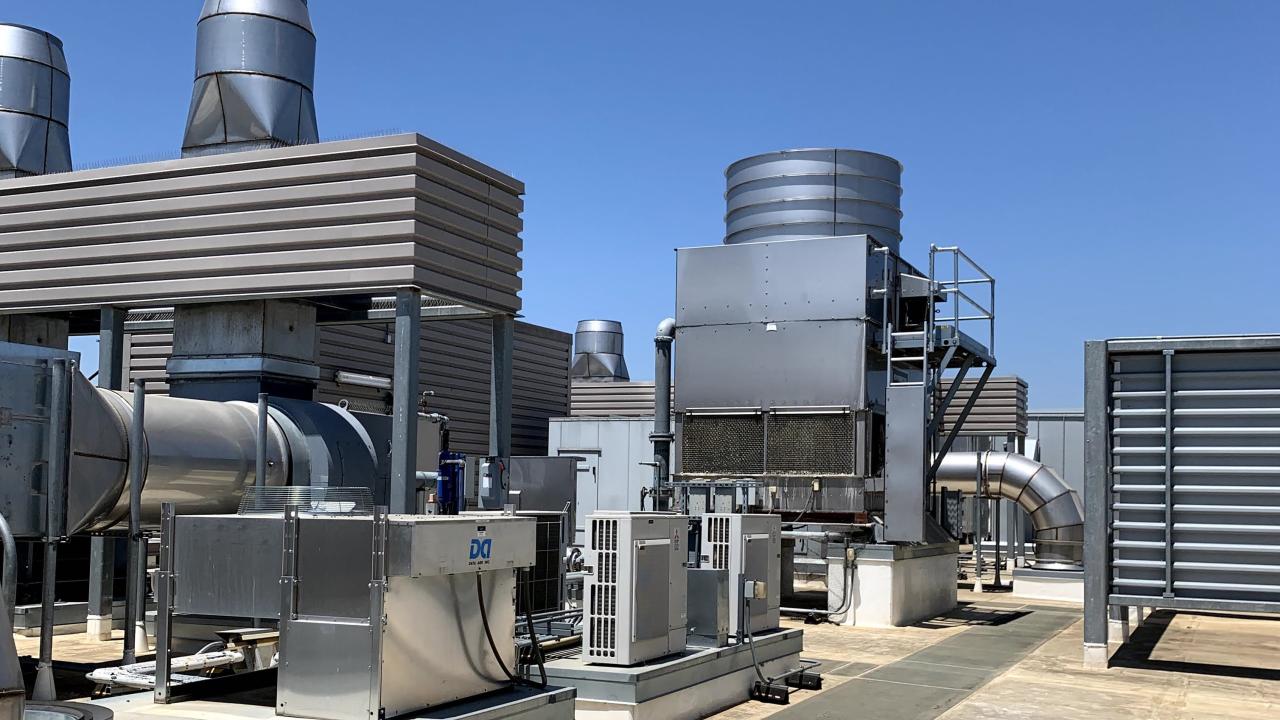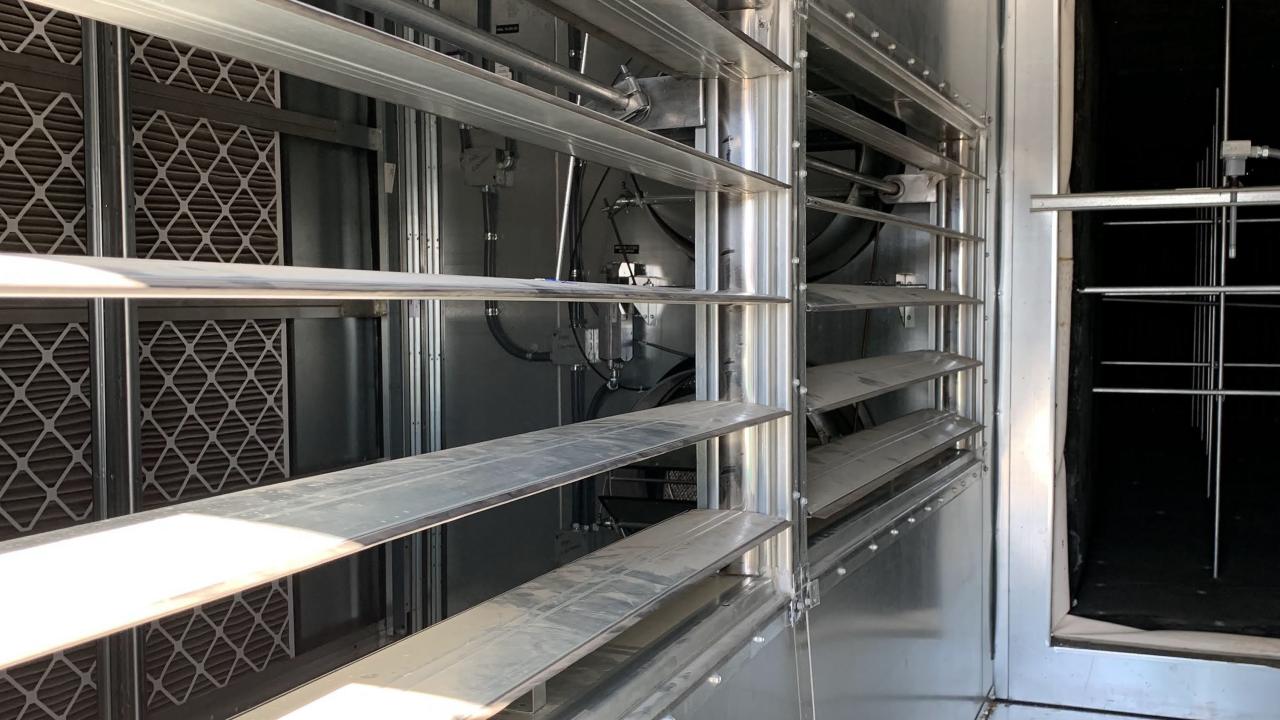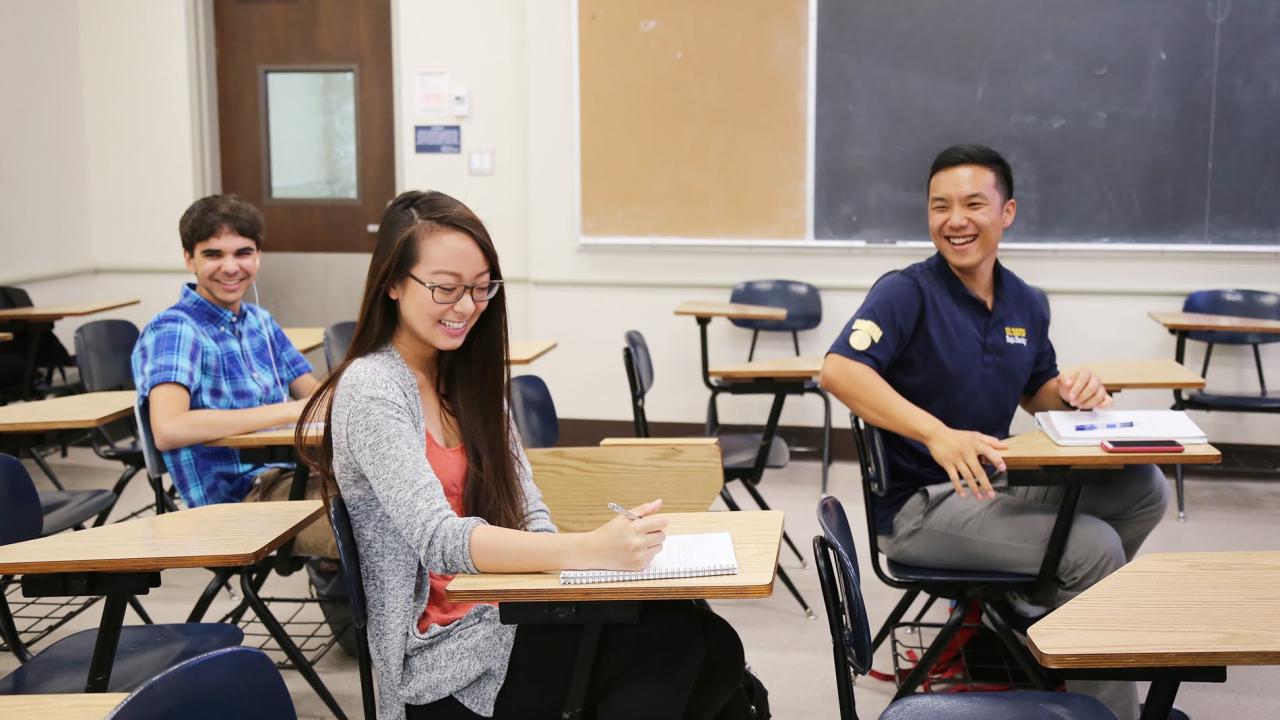What is a thermostat?
A thermostat is a piece of the temperature control system. You probably have one in your home or apartment, and the ones on campus perform a similar function, but on a larger scale. On campus we have thousands of thermostats that control the indoor temperatures, some are set remotely and others are manually set. See photos of some of the different types of thermostats we have across campus.
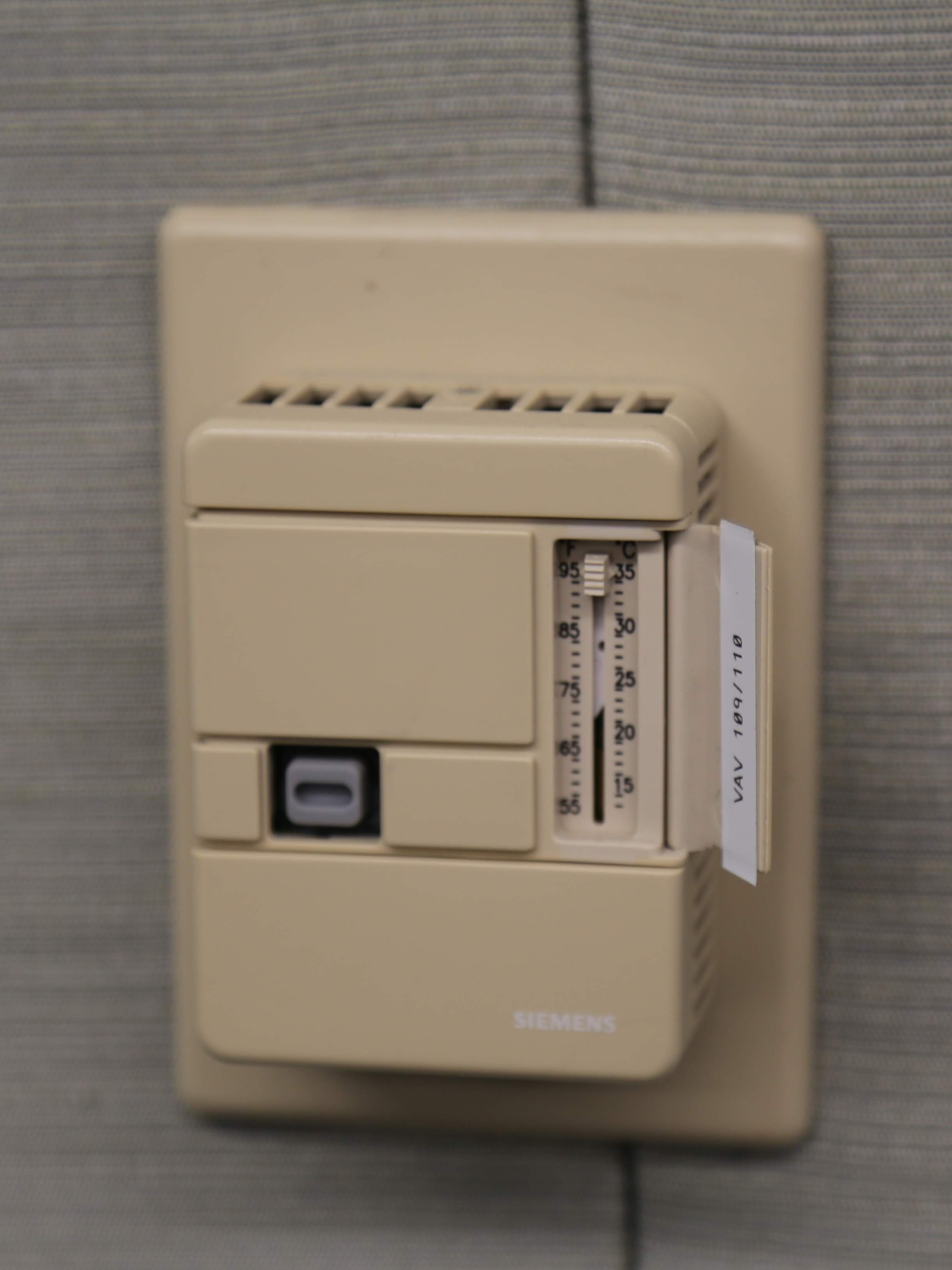
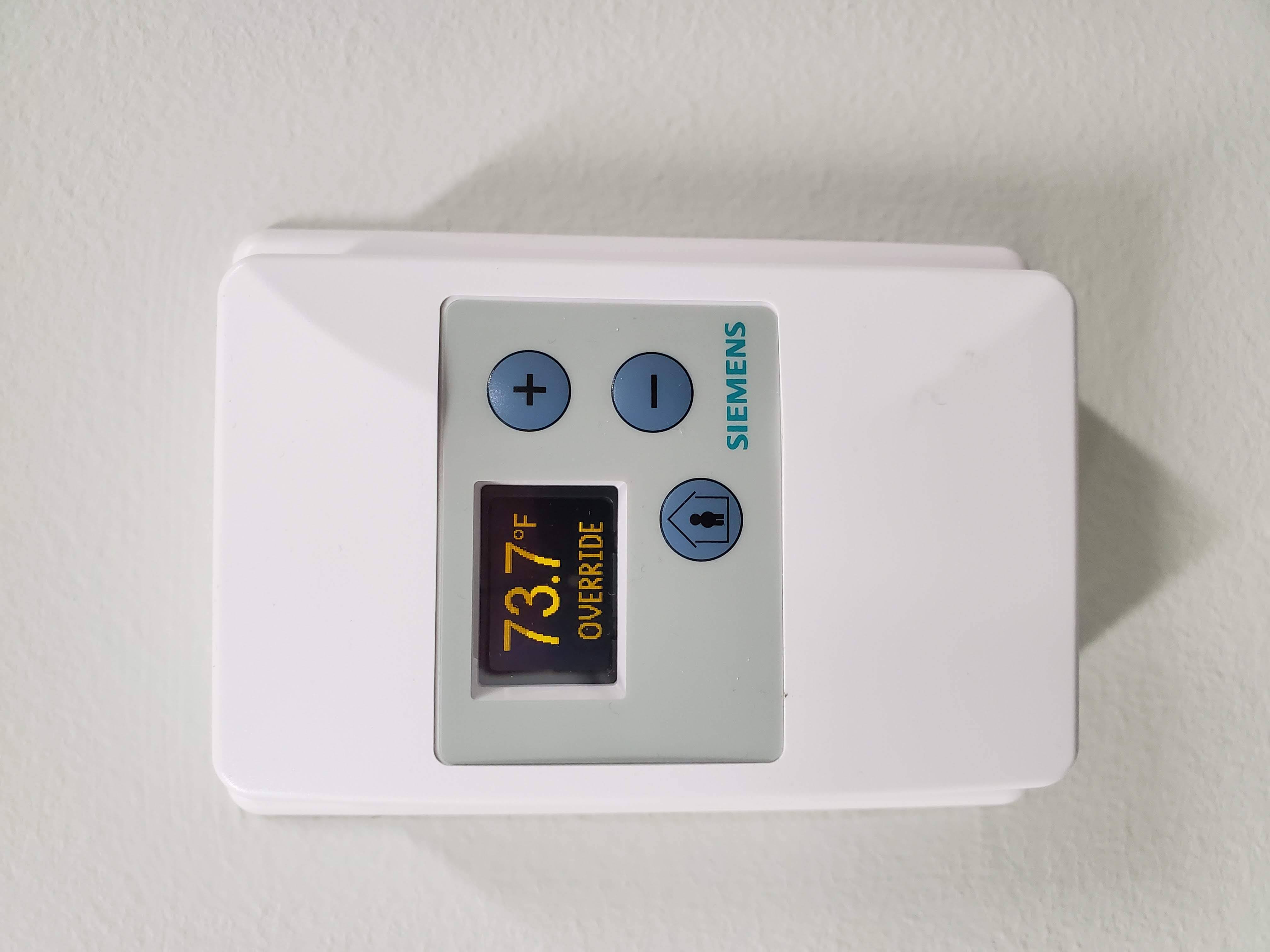
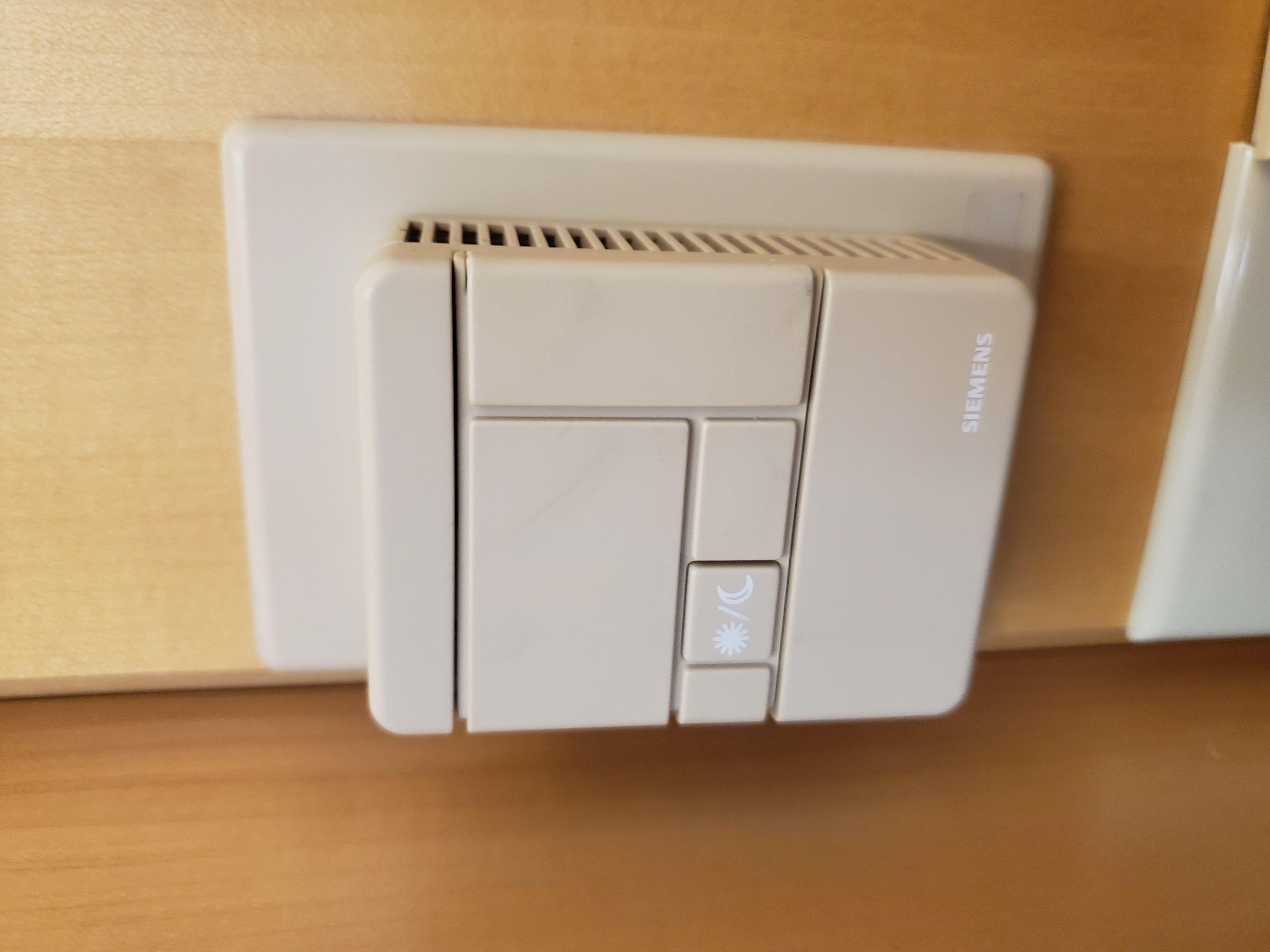
What's a set point?
A set point is the temperature point at which a thermostat has been set. Straightforward, right? Many thermostats have 2 set points, a heating set point a and cooling set point. Adjusting these points, even by a few degrees, can cause major energy-saving differences in a building.
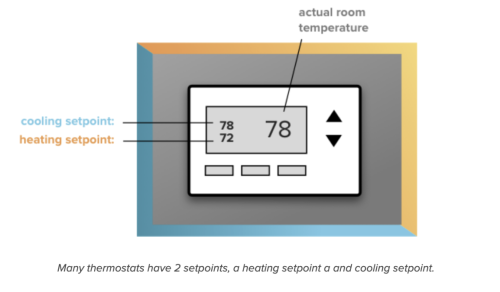
How do set points work?
Set points work relative to the room temperature. The Heating, Ventilation, and Air Conditioning (HVAC) system works to bring the room temperature to the set point temperature.
For example, if your room temperature is 78°F, and the set point is 76°F, then the heating and cooling equipment will work to cool the building to that setpoint. Some thermostats have one set point, and others have two: a heating set point, and a cooling set point.
If the room temperature is within the two set points, the HVAC system will not heat or cool the space but will continue to provide ventilation.

How can we use set points to save energy?
Air Conditioning usually accounts for at least half of a building's energy use, so adjusting set points in a building can make a huge difference when it comes to energy savings! Typical office buildings consume large amounts of energy maintaining their occupied spaces within temperature ranges that are often very narrow. This energy usage can be reduced significantly by widening the set point range to include a larger range of temperatures (a range that we call our Comfort Band).
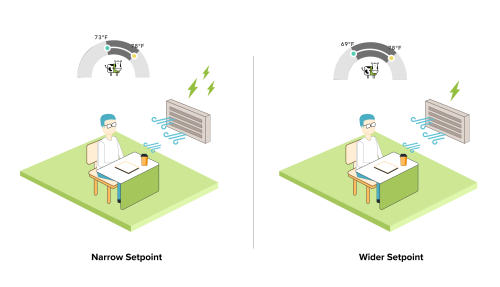
It's important to remember that a room meeting its set point temperature does not always equate with comfort. Your comfort in a building depends on several factors, including how you think the room feels! That's why we need occupants like you on campus to use TherMOOstat to submit their comfort feedback. With TherMOOstat, you can tell us if you're too hot, chilly, or perfect. Even "perfect" feedback is useful because it lets us know that the set point for your room is optimal!
Topics In this Section
- Key Terms In This Section
- Thermostat: piece of the temperature control system.
Set point: the temperature at which a thermostat has been set.
Heating set point: HVAC system will heat the room to set point temperature.
Cooling set point: HVAC system will cool the room to set point temperature.



